You can contact LEARNZ, part of CORE Education, at:
Postal Address:
PO Box 13 678,
Christchurch 8141,
New Zealand
Kia ora koutou,
To discover more about the marine environment here in Nelson you need to leave the land behind and head out to sea. Luckily staff at NIWA had organised a boat trip out into Tasman Bay, so you didn’t have to swim. People at NIWA, the National Institute of Water and Atmospheric Research study our ocean, freshwater and climate systems. Some of the scientists working here are involved in the Sustainable Seas Challenge. They wanted to take you fishing to show you how scientists gather information about marine areas.
The Sustainable Seas National Science Challenge
Before heading out on the boat you met with Clara Schielman and Rebecca McMullin who are students at the University of Otago. Both Clara and Rebecca are working on the Sustainable Seas Science challenge which involves scientists and other experts from all around New Zealand. The challenge aims to find ways to manage our marine ecosystems, so everyone benefits, and the ecosystem stays healthy. You can watch the video about this challenge. Rebecca and Clara have been studying marine ecosystems in Tasman Bay. They are looking at how people can cause changes in these ecosystems. They answered questions from Ngatimoti School during the live web conference. These students were curious about New Zealand’s marine ecosystems and their importance. Clara and Rebecca talked about the variety of plants and animals that live in our seas. They also explained that healthy seas mean healthy people. You can find out more by listening to the recorded web conference.
Lets go fishing
It was then time to grab a fishing rod and life jacket and head out into Tasman Bay on the NIWA research boat. Rebecca has been studying the affects of salmon farms on the Marlborough Sounds. She wanted to show you what fish can tell us about the health of a marine ecosystem. You headed out past the Boulder Bank to do some fishing. John and Rebecca set up some pots to try and catch some fish, while Clara organised the fishing rods and bait. Then all you had to do was wait. Fishing can test your patience but eventually Rebecca caught a blue cod. Unfortunately this fish wasn’t big enough and had to be thrown back because it is against the law to catch undersized fish. Small fish need to be left to grow and breed. If everyone caught these fish there would eventually be no big fish left. This is also why there are limits on the numbers of fish you can catch. These rules help keep fishing sustainable.
Everything is interconnected
After a while everyone lost patience and went back to check on the pots you had set earlier. Even these were empty and I started to wonder about whether this ecosystem is healthy. Clara explained that an ecosystem is made up of many elements. These elements include all the living things that share an environment with non-living things, such as water, sand and rocks. These living and non-living elements are all interconnected. If you change any element, then it can affect the health of the entire ecosystem. The challenge for scientists is to try and understand all these interconnected elements. So it's hard to know if the Tasman Bay ecosystem is healthy. To know for sure you would have to look at a lot more than just the fish and spend more than just a few hours fishing. You can watch the video about this.
Looking inside a fish
You headed back into Nelson Haven to make one last attempt to catch a fish. Before long the fish were biting, and John managed to reel in a legal-sized snapper. You headed back to shore to the NIWA lab to see what this fish could tell us about the ecosystem in which it lives. It was fascinating to see how the ear bones or otoliths can be used to age the fish. These bones have growth rings just like trees so by counting the number of rings you can find out how old the fish is. To do this you need to use a microscope. Rebecca also showed you what the fish had been eating. The liver can also be analysed to see what chemicals it has inside. This will tell Rebecca if the marine environment is clean or contaminated. Clara is studying bivalves so she dissected a mussel. You can watch the video to see what she found. It has been interesting to see how scientists work today and how complex our marine ecosystems are.
Tomorrow you will head to the estuary. Here you will discover more about the secret life of creatures living beneath the sand.
See you then,
Shelley the LEARNZ field trip teacher.
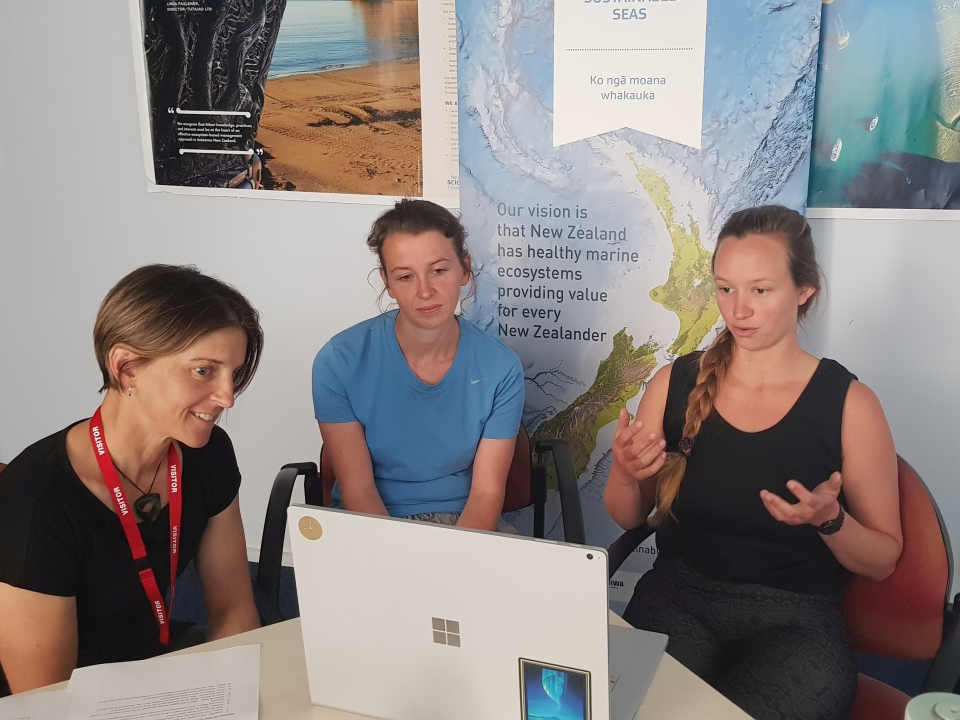
Shelley, Rebecca and Clara talk to Ngatimoti School during the first web conference. Image: Andrew Penny, LEARNZ.

The NIWA research boat is launched in Nelson Haven ready to take you fishing. Image: Shelley Hersey, LEARNZ.
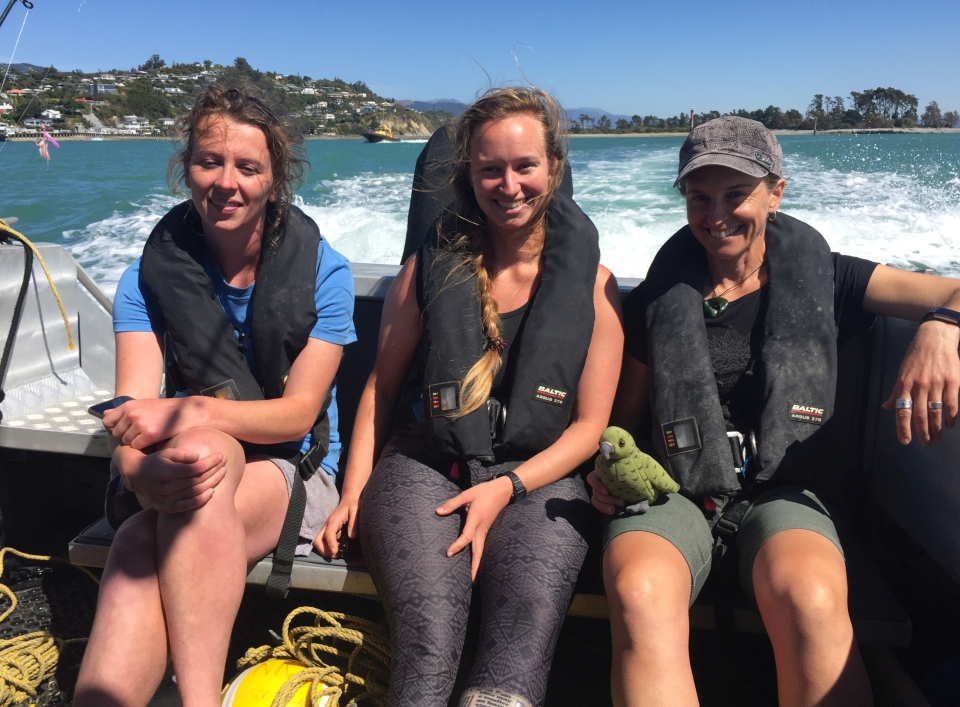
Rebecca, Clara, Shelley and Māia the LEARNZ ambassador head out past the Boulder Bank in Nelson to go fishing. What fish do you think they might catch in this area? Image: Andrew Penny, LEARNZ.
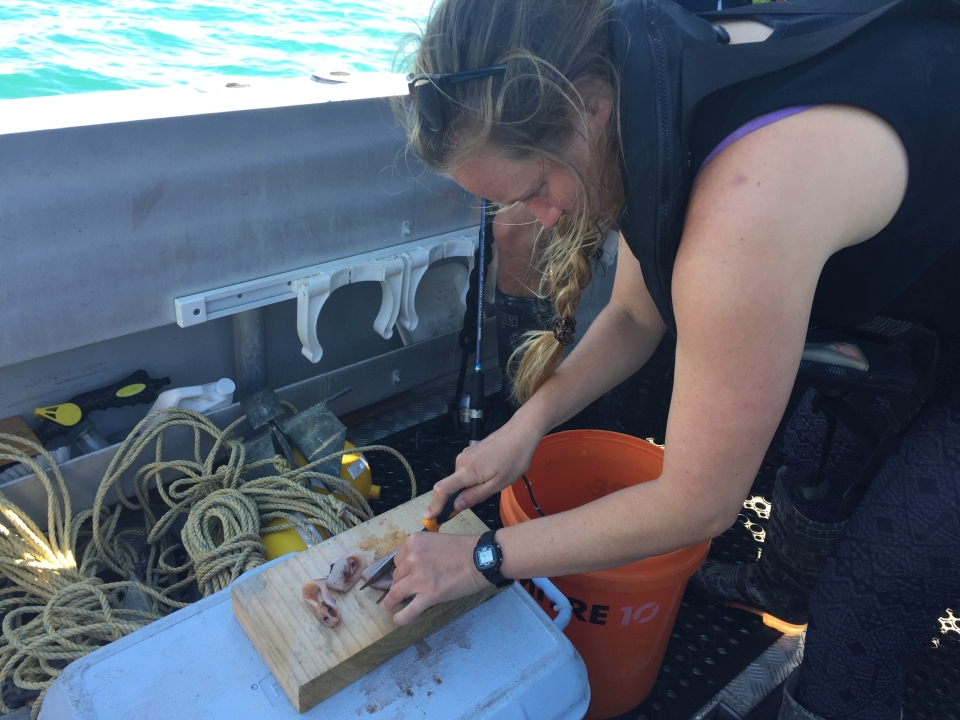
Clara prepares some bait. What do you think this bait is? Image: Shelley Hersey, LEARNZ.
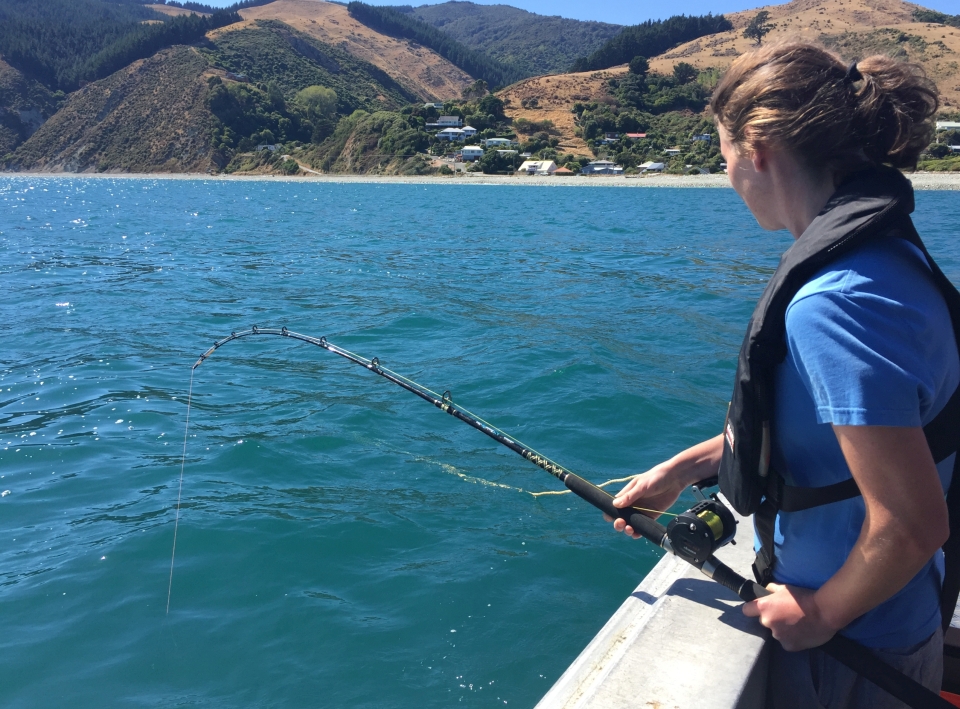
Rebecca waits patiently for a fish to bite. Image: Shelley Hersey, LEARNZ.
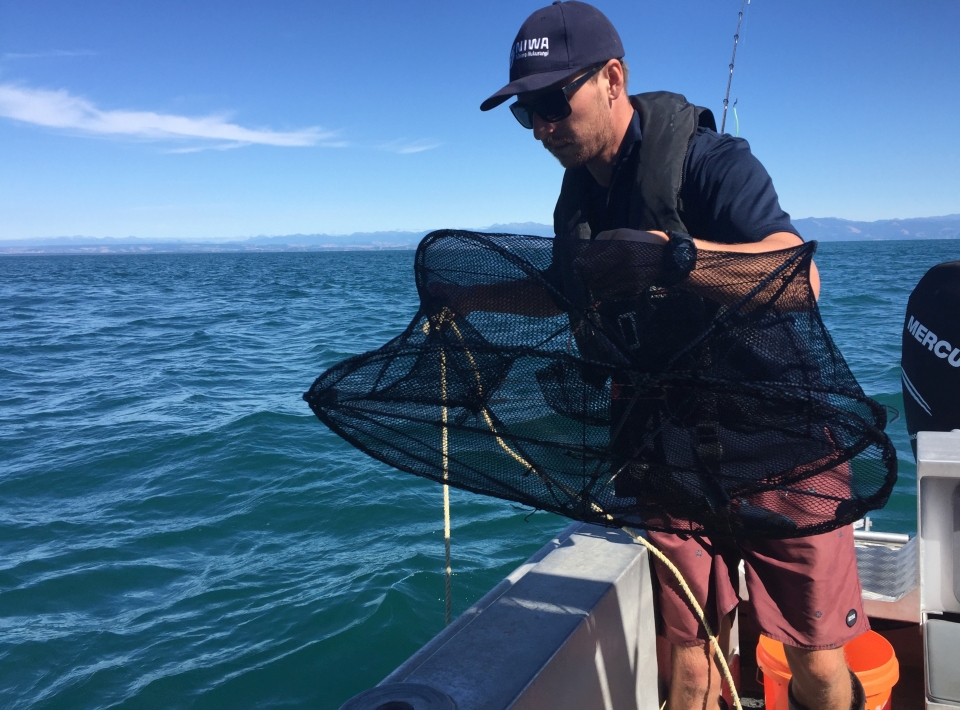
John sets some pots to try and catch some fish. What types of fish do you think he could catch in these pots? Image: Shelley Hersey, LEARNZ.
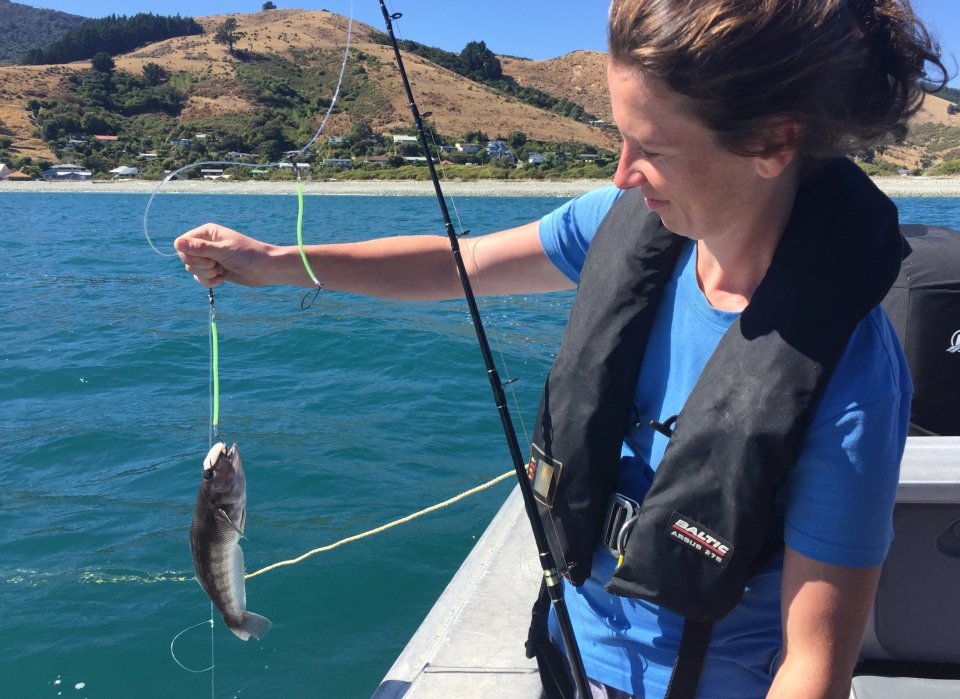
Rebecca catches a blue cod but it is under the minimum size. What is the legal size for blue cod? Image: Shelley Hersey, LEARNZ.
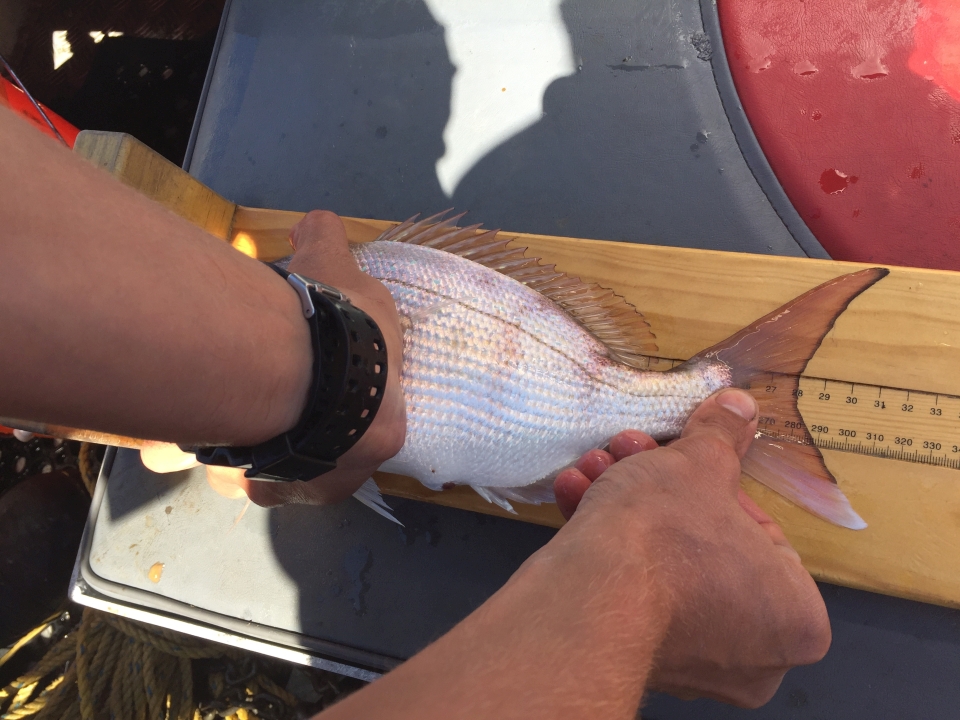
Success! Finally you catch a legal-sized fish. Do you know what type of fish this is? Image: Shelley Hersey, LEARNZ.
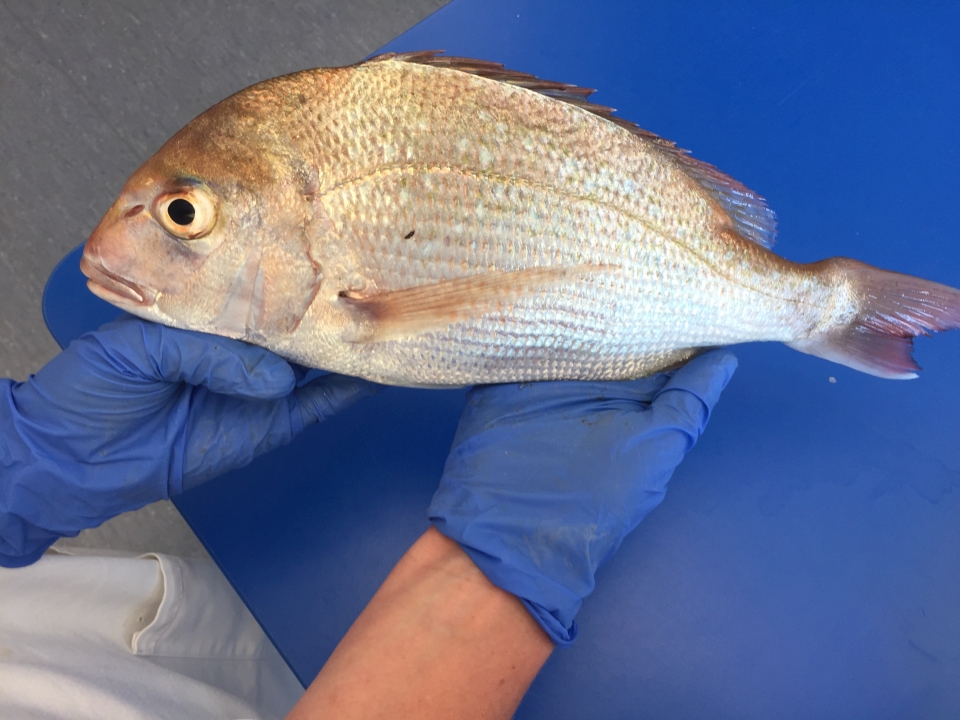
Rebecca prepares a snapper for dissection. What do you think she will learn from dissecting this fish? Image: Shelley Hersey, LEARNZ.
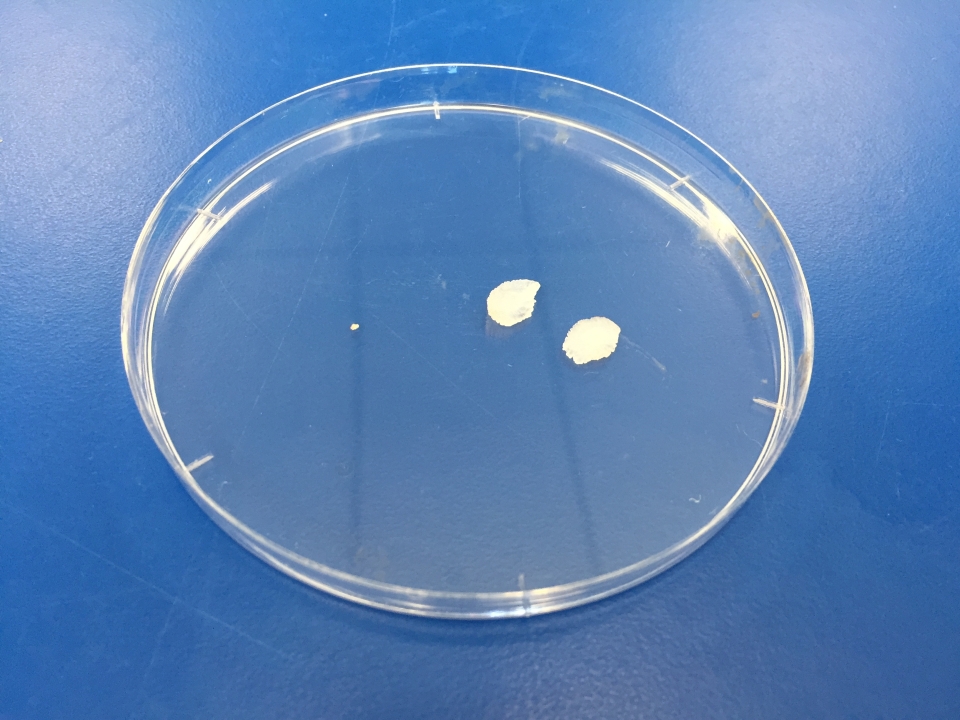
These are otoliths, the ear bones of a fish. What can the otoliths tell us about this fish? Image: Shelley Hersey, LEARNZ.